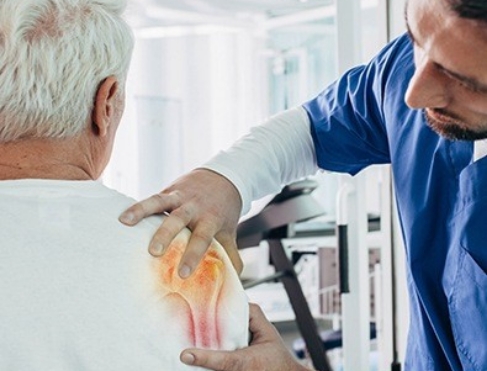Treating Labrum Tears Glastonbury
Avoid Surgery & Enjoy Complete Relief

To prevent pain and improve stability, your joints are separated by cartilage. The labrum is a ring of cartilage that makes up part of the ball-and-socket joints of your hips and shoulders. Your labrum, much like other joints and cartilage, is vulnerable to injury and tearing. Here at the New England Stem Cell Institute, Dr. Paul Tortland specializes in diagnosing and treating labrum tears in Glastonbury and provides innovative treatments to promote the healing of damaged tissue.
What is a Labrum Tear?

The labrum is a ring of cartilage that surrounds the rim of your hip and shoulder sockets and helps keep the ball of the joint in place. Athletes are most at risk of labrum tears due to the stress and high impact they often place on their joints. You can also be at risk of a labrum tear if you take part in activities that require repetitive motion. A structural abnormality can also increase your risk.
What are the Symptoms of a Labrum Tear?

The symptoms you experience can vary, and some people might not feel any symptoms at all. Common symptoms that may indicate a labrum tear include:
- Joint pain and instability
- Decreased and/or painful range of motion
- Locking or clicking in the joint
- Sharp or pinching pain, particularly in the groin (in the case of hip labral tears) or “deep inside” the joint (in the case of shoulders)
- Decreased strength
How is a Labrum Tear Diagnosed?

A labral tear can only be diagnosed with an MRI, but our team at the New England Stem Cell Institute will normally conduct a thorough physical exam first. If our team suspects a labrum tear, we may perform a diagnostic injection by putting a small amount of anesthetic in the joint under ultrasound guidance. If you experience significant relief after the injection, then a labrum tear could be the cause of your symptoms. An MRI would then be used to confirm the tear.
How are Labral Tears Treated?

Treatment of your labrum tear depends on the nature and severity of the tear. If your tear is small, you might be able to get by with just physical therapy. If physical therapy doesn’t help, our team may recommend regenerative medicine treatments such as fat-derived stem cell therapy. These regenerative treatments accelerate your body’s natural repair process to promote the healing of damaged tissue. If your tear is large or complex, surgery may be necessary.
